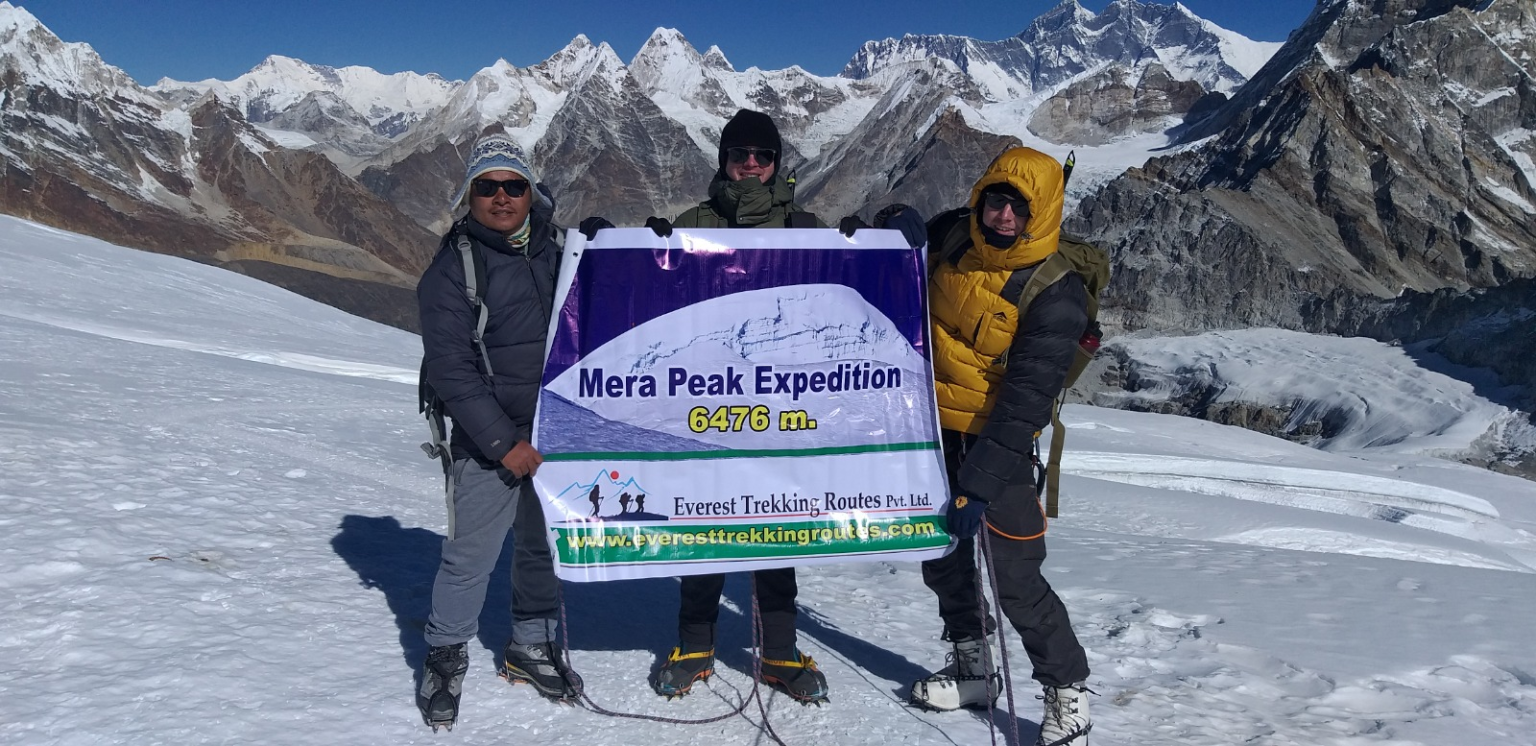Nepal, nestled in the heart of the Himalayas, is a dream destination for climbers and trekkers. Beyond the mighty Everest, three remarkable trekking peaks attract adventurers from around the globe: Mera Peak, Island Peak, and Lobuche Peak. Each of these summits offers a unique challenge and unparalleled views of the world’s tallest mountains. Whether you’re an aspiring mountaineer or a seasoned high-altitude explorer, these peaks offer a perfect blend of adventure, altitude, and cultural immersion.
Mera Peak – The Highest Trekking Peak in Nepal
Mera Peak (6,476 meters / 21,247 feet) is the highest trekking peak in Nepal and offers one of the best panoramic viewpoints in the entire Himalayas. Located in the remote Hinku Valley, east of Lukla, the climb is technically straightforward, making it a favorite among those looking to experience high altitude without steep technical climbing.
The journey to Mera Peak starts with a scenic flight to Lukla, followed by several days of trekking through pristine forests, remote villages, and glacial valleys. Unlike the more commercial Everest Base Camp route, Mera’s trail is quieter and wilder, offering a deep sense of solitude and immersion in nature.
Though technically a trekking peak, Mera demands physical endurance and acclimatization. The final ascent involves climbing on snow and ice, with the use of crampons and ropes. Climbers are rewarded with a sweeping 360-degree view of five of the world’s highest mountains: Everest, Lhotse, Cho Oyu, Makalu, and Kanchenjunga.
Mera Peak is ideal for those with basic mountaineering skills seeking their first Himalayan summit over 6,000 meters. It’s often considered a stepping stone to more challenging climbs in the future.
Island Peak – The Alpine Experience for Aspiring Climbers
Island Peak (also known as Imja Tse) rises to 6,189 meters (20,305 feet) and is perhaps the most popular trekking peak in Nepal. Located in the Everest region, it gets its name from its appearance—like an island in a sea of ice, as seen from Dingboche village.
The Island Peak expedition is often combined with the classic Everest Base Camp trek, allowing climbers to acclimatize well while enjoying the region’s iconic landscapes. Trekkers follow the Khumbu Valley past Namche Bazaar, Tengboche Monastery, and Dingboche before branching off towards Chhukung and the Imja Valley.
Island Peak presents more technical challenges than Mera. The ascent includes a steep ice headwall and a narrow summit ridge, requiring good use of ropes, ice axes, and crampons. It’s a genuine alpine experience, offering a taste of true mountaineering without the commitment of an 8,000-meter climb.
The summit rewards climbers with a close-up view of towering peaks like Lhotse, Ama Dablam, and Baruntse. It’s a fantastic option for trekkers with basic climbing training who want to push their limits in a stunning high-altitude environment.
Lobuche Peak – The Hidden Gem with a Technical Edge
Lobuche Peak, standing at 6,119 meters (20,075 feet), is a slightly more technical and lesser-known alternative to Island Peak. It lies near the Everest Base Camp route and has two summits: Lobuche East (commonly climbed) and Lobuche West (a more technical expedition peak that requires a separate permit).
Lobuche East offers a more challenging climb than Mera and Island Peak, making it a favorite among experienced trekkers and amateur climbers. The route includes glacier travel, fixed rope sections, and a steep ice wall near the summit. It demands a solid understanding of basic alpine climbing techniques and physical preparation.
The approach to Lobuche Peak begins on the Everest Base Camp trail, passing iconic landmarks like Namche Bazaar, the Khumbu Glacier, and Gorak Shep. Climbers often make a short detour to Everest Base Camp or Kala Patthar for acclimatization before heading to Lobuche High Camp.
From the summit, climbers enjoy breathtaking views of Everest, Nuptse, Lhotse, Pumori, and the surrounding Khumbu peaks. The mountain provides a sense of isolation, challenge, and accomplishment that makes the experience unforgettable.
Preparing for the Climb
No matter which peak you choose, preparation is key. All three require a high level of fitness, mental resilience, and proper acclimatization. Previous trekking experience at high altitudes is recommended, and basic mountaineering skills—such as using crampons, harnesses, and ice axes—are essential, especially for Island and Lobuche.
Training for these climbs should include cardiovascular workouts, strength training, and hiking with a backpack. Spending time at altitude prior to the expedition can greatly improve your acclimatization and chances of success.
Hiring a reputable local guide or agency is also crucial. They provide not only logistics and support but also essential safety on technical sections. Most guided expeditions include climbing permits, domestic flights, porters, meals, and gear.
Conclusion
Mera Peak, Island Peak, and Lobuche Peak each offer their own distinct charm and challenges in the Nepalese Himalayas. Whether you’re drawn to the remote wilderness of Mera, the technical adventure of Island, or the alpine challenge of Lobuche, these peaks promise adventure, inspiration, and the satisfaction of standing atop a Himalayan summit.
Climbing any of these mountains is more than just a physical achievement—it’s a journey into some of the world’s most dramatic landscapes and a deep dive into the rich Sherpa culture that defines the high Himalayas. For those seeking the thrill of altitude and the beauty of Nepal, these three peaks are waiting to be conquered.
Contact Details
———————
Company address: Everest Trekking Routes Pvt. Ltd.
16 Khumbu, Nayabazaar, Kathmandu, Nepal
Mobile : +977-9843467921 (Rabin)
Email: [email protected]
URL:- www.everesttrekkingroutes.com


